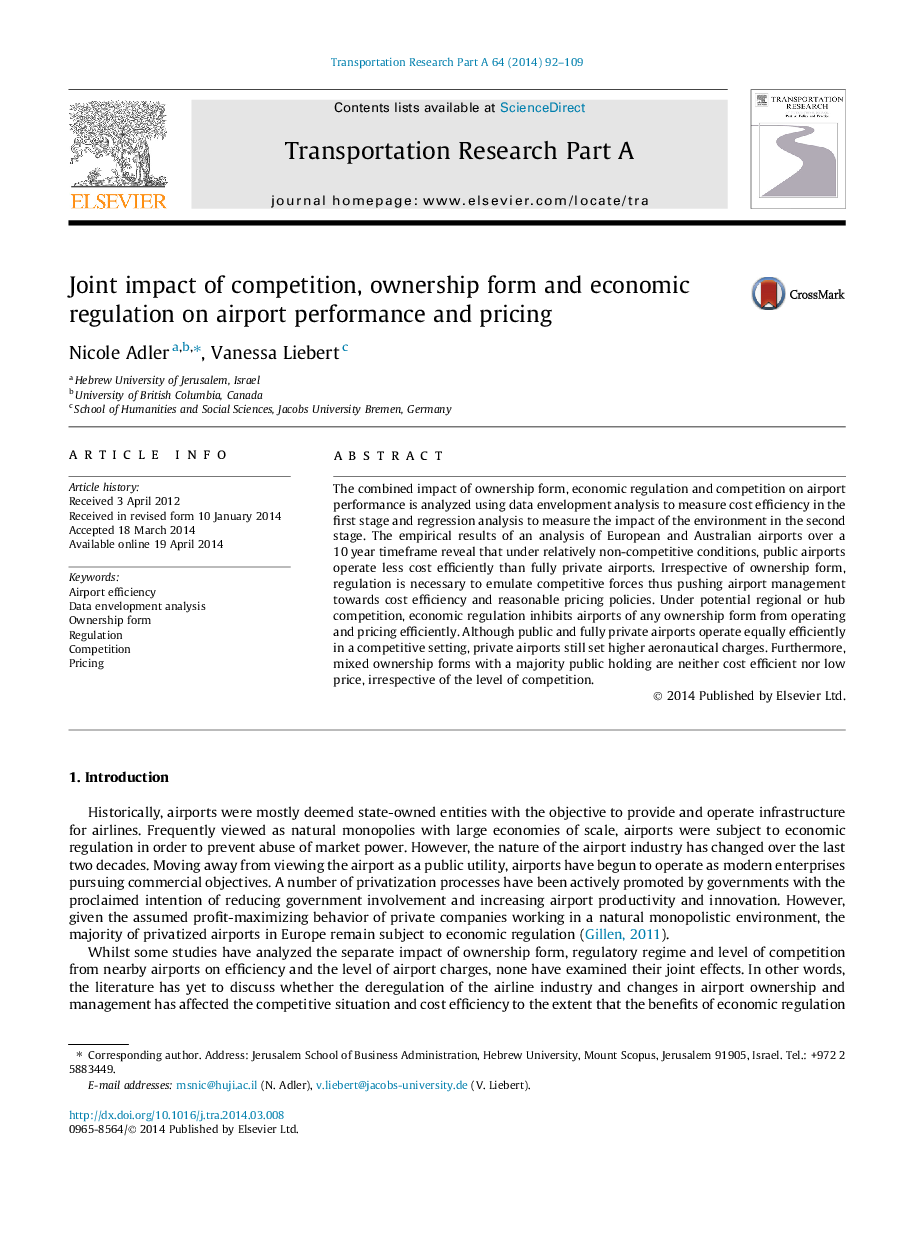| Article ID | Journal | Published Year | Pages | File Type |
|---|---|---|---|---|
| 6781784 | Transportation Research Part A: Policy and Practice | 2014 | 18 Pages |
Abstract
The combined impact of ownership form, economic regulation and competition on airport performance is analyzed using data envelopment analysis to measure cost efficiency in the first stage and regression analysis to measure the impact of the environment in the second stage. The empirical results of an analysis of European and Australian airports over a 10Â year timeframe reveal that under relatively non-competitive conditions, public airports operate less cost efficiently than fully private airports. Irrespective of ownership form, regulation is necessary to emulate competitive forces thus pushing airport management towards cost efficiency and reasonable pricing policies. Under potential regional or hub competition, economic regulation inhibits airports of any ownership form from operating and pricing efficiently. Although public and fully private airports operate equally efficiently in a competitive setting, private airports still set higher aeronautical charges. Furthermore, mixed ownership forms with a majority public holding are neither cost efficient nor low price, irrespective of the level of competition.
Related Topics
Physical Sciences and Engineering
Engineering
Civil and Structural Engineering
Authors
Nicole Adler, Vanessa Liebert,
